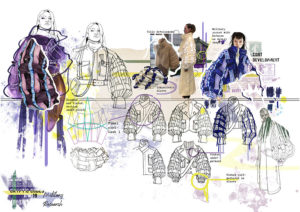The Evolution of Fashion: From Function to Expression
Fashion, as we know it today, is more than just clothing. It’s a statement, a form of expression, and a reflection of society’s values, beliefs, and aspirations. But the journey of fashion from its humble beginnings to its current status as a global industry has been a fascinating one, marked by innovation, cultural shifts, and changing perceptions of beauty and identity.
The roots of fashion can be traced back to ancient civilizations where clothing served primarily functional purposes: protection from the elements and indication of social status or occupation. In ancient Egypt, for instance, garments were often made from linen and adorned with elaborate jewelry, symbolizing wealth and prestige. Similarly, in ancient Rome, clothing was used to signify social hierarchy, with sumptuary laws dictating what different classes could wear.
As societies evolved, so did fashion. The Middle Ages saw the rise of elaborate garments, with intricate embroidery and luxurious fabrics reserved for the aristocracy and clergy. Fashion became a symbol of power and authority, reinforcing social hierarchies and reinforcing cultural norms.
The Renaissance period brought about a shift towards more elaborate and ornate clothing, with a focus on individualism and self-expression. The invention of the printing press allowed for the mass production of textiles, making fashion more accessible to a wider range of people. This period also saw the emergence of fashion trends and styles that continue to influence contemporary fashion today.
The Industrial Revolution of the 18th and 19th centuries revolutionized the fashion industry, with the introduction of mechanized production techniques and the mass production of clothing. Ready-to-wear garments became increasingly popular, making fashion more affordable and accessible to the masses. This era also saw the rise of fashion houses and designers, who became synonymous with luxury and sophistication.
The 20th century witnessed dramatic changes in fashion, driven by social, political, and technological developments. The two World Wars brought about significant shifts in fashion, as austerity measures and rationing led to simpler, more practical clothing styles. However, the post-war period saw a resurgence of glamour and extravagance, with designers such as Christian Dior leading the way with his “New Look” silhouette.
The latter half of the 20th century witnessed the democratization of fashion, as youth culture and street style began to influence mainstream fashion trends. The emergence of subcultures such as punk, hippie, and grunge challenged conventional notions of beauty and style, paving the way for greater diversity and inclusivity in the fashion industry.
The 21st century has seen fashion evolve into a global phenomenon, with the rise of fast fashion brands and online retailers democratizing access to clothing and accessories. Social media platforms like Instagram have become powerful tools for shaping and disseminating fashion trends, allowing individuals to express their personal style and connect with like-minded fashion enthusiasts from around the world.
Today, fashion is more than just clothes; it’s a form of self-expression, creativity, and identity. From haute couture runways to street style photography, fashion continues to evolve and adapt to the ever-changing cultural landscape. As we look to the future, one thing is clear: the development of fashion will continue to be shaped by innovation, diversity, and the quest for self-expression.
You May Also Like
Modeling in the Age of Social Media
In today’s fast-paced digital world, social media has become a game-changer for models looking to make their mark in the industry. It’s not just about strutting your stuff on the runway; it’s also about crafting your unique online presence. Social media modeling has opened up new avenues for aspiring models and established professionals alike. In...
Discover Talent and Creativity at the BModel Annual Fashion & Photography Contest in Alicante
Alicante, Spain – This September, the scenic city of Alicante will play host to a dazzling showcase of fashion and photography as BModel presents its Annual Fashion & Photography Contest. Scheduled from September 27 to 30, 2024, this prestigious event will bring together talented models and photographers from around the globe for a weekend of...